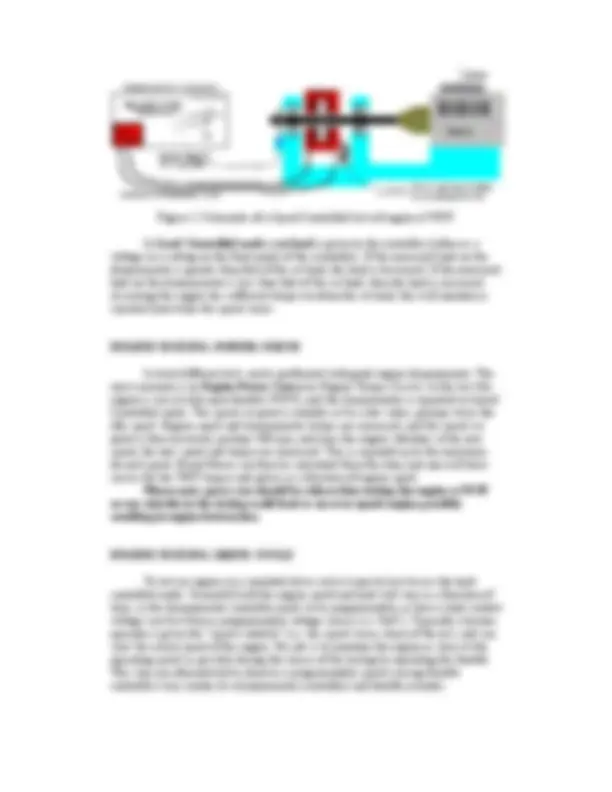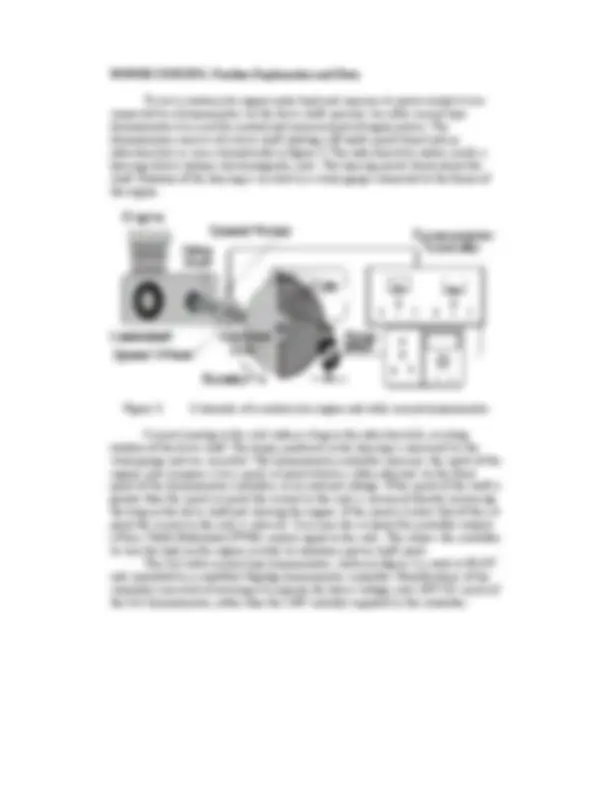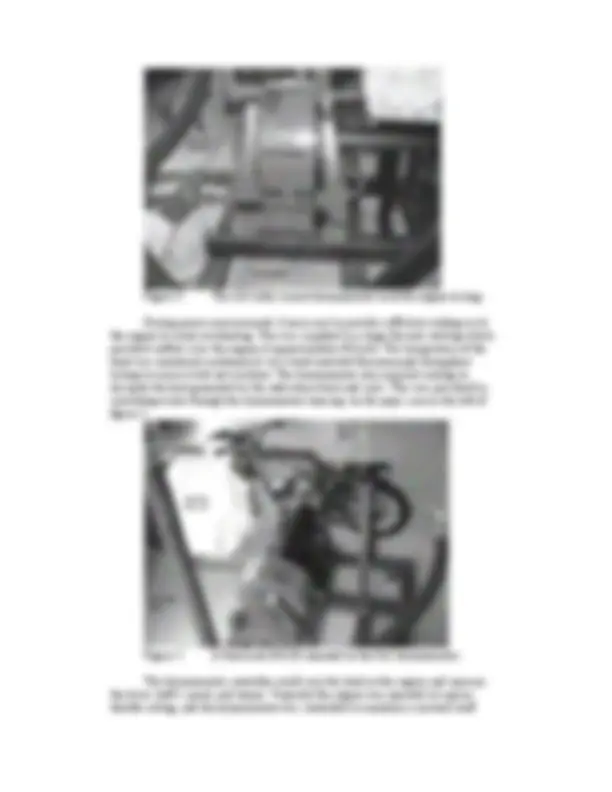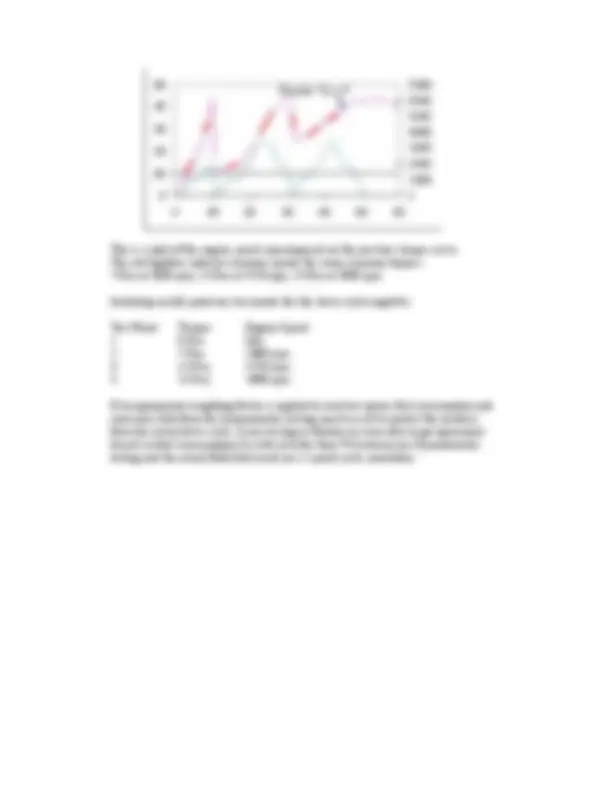






Study with the several resources on Docsity

Earn points by helping other students or get them with a premium plan


Prepare for your exams
Study with the several resources on Docsity

Earn points to download
Earn points by helping other students or get them with a premium plan
Community
Ask the community for help and clear up your study doubts
Discover the best universities in your country according to Docsity users
Free resources
Download our free guides on studying techniques, anxiety management strategies, and thesis advice from Docsity tutors
How to understand the work of dynamometer
Typology: Study Guides, Projects, Research
1 / 8

This page cannot be seen from the preview
Don't miss anything!





Dr. Horizon Gitano University Science Malaysia
Dynamometer Overview Dynamometer Operation Dynamometer Controllers Testing: Power Curve Drive Cycle Simulation Power Testing: A further explanation and data Drive Cycle Testing: Further explanation
A dynamometer is a load device which is generally used for measuring the power output of an engine. Several kinds of dynamometers are common, some of them being referred to as “breaks” or “break dynamometers”: dry friction break dynamometers, hydraulic or water break dynamometers and eddy current dynamometers. Dry friction dynamometers are the oldest kind, and consist of some sort of mechanical breaking device, often a belt or frictional “shoe” which rubs a rotating hub or shaft. The hub or shaft is spun by the engine. Increasing tension in the belt, or force of the shoe against the hub increases the load on the engine. Hydraulic dynamometers are basically hydraulic pumps where the impeller is spun by the engine. Load on the engine is varied by opening or closing a valve, which changes back pressure on the hydraulic pump. Eddy current dynamometers are electromagnetic load devices. The engine being tested spins a disk in the dynamometer. Electrical current passes through coils surrounding the disk, and induce a magnetic resistance to the motion of the disk. Varying the current varies the load on the engine. The dynamometer applies a resistance to the rotation of the engine. If the dynamometer is connected to the engine’s output shaft it is referred to as an Engine Dynamometer. When the dynamometer is connected to the vehicles drive wheels it is called a Chassis Dynamometer. The force exerted on the dynamometer housing is resisted by a strain measuring device (for example a strain gage).
Several components are typically packaged together in a dynamometer: the shaft with bearings, the resistance surface, the resistance mechanism in a “free” rotating housing, a strain gage, and a speed sensor (see figure 1 for a schematic of an Eddy Current Dynamometer). Generally some method of cooling is also required, and this may require either a heat exchanger or air or water circulation, this is not shown in figure 1. The entire assembly is typically mounted on a stout frame, which is mechanically linked to the frame of the engine being tested.
Figure 1. Eddy Current Dynamometer
The force signal (F) from the strain gage may be converted into a torque (T) by multiplying by the distance from the center of the shaft to the pivot point of the strain gage (R):
T = R x F
If the units are in Newton-meters and shaft speed (S) is measured in radians per second, then the shaft power or break power (P) of the engine can be calculated by multiplying the speed and the torque:
P = T x S
Obviously if you are using different units than you will need to use the appropriate conversion factors.
In order to test the engine it is generally necessary to use a dynamometer controller. This is usually an electronic unit which has the capability of controlling the load on the dynamometer (i.e. it controls the current to the resistance coils in an eddy current dynamometer) and can measure or sense the load and speed. Dynamometer controllers generally operate in two modes: Speed Controlled operation or Load Controlled operation.
In Speed Controlled mode a set speed is given to the controller (either as a voltage or a setting on the front panel of the controller, see figure 2). If the measured speed of the shaft is less than that of the set speed, the load is decreased. If the measured speed of the shaft is greater than that of the set speed, then the load is increased. Assuming the engine has sufficient torque to attain the set speed, this will maintain a constant speed.
POWER TESTING: Further Explanation and Data
To test a motorcycle engine under load and measure its power output it was connected to a dynamometer via the drive shaft sprocket. An eddy current type dynamometer was used for control and measurement of engine power. The dynamometer consists of a drive shaft rotating a 60 tooth speed wheel and an induction disk as seen schematically in figure 3. The induction disk rotates inside a housing which contains electromagnetic coils. The housing pivots freely about the shaft. Rotation of the housing is resisted by a strain gauge connected to the frame of the engine.
Figure 3 Schematic of a motorcycle engine and eddy current dynamometer
Current running in the coils induces drag in the induction disk, resisting rotation of the drive shaft. The torque produced in the housing is measured by the strain gauge and was recorded. The dynamometer controller measures the speed of the engine, and compares it to a speed set point which is either adjusted via the front panel of the dynamometer controller, or an external voltage. If the speed of the shaft is greater than the speed set point the current in the coils is increased thereby increasing the drag on the drive shaft and slowing the engine. If the speed is below that of the set point the current in the coils is reduced. Very near the set point the controller outputs a Pulse Width Modulated (PWM) control signal to the coils. This allows the controller to vary the load on the engine in order to maintain a given shaft speed. The SAJ eddy-current type dynamometer, shown in figure 4 is rated at 30 kW and controlled by a modified Digalog dynamometer controller. Modifications of the controller consisted of rewiring it to operate the lower voltage coils (30V DC each) of the SAJ dynamometer, rather than the 130V initially supplied by the controller.
Figure 4 The SAJ eddy current dynamometer used for engine testing.
During power measurements it necessary to provide sufficient cooling air to the engine to avoid overheating. This was supplied by a large fan and cowling which provided airflow over the engine at approximately 40 km/h. The temperature of the head was monitored continuously via a head mounted thermocouple throughout testing to ensure it did not overheat. The dynamometer also required cooling to dissipate the heat generated by the induction wheel and coils. This was provided by circulating water through the dynamometer housing via the pipes seen in the left of figure 5.
Figure 5 A Kawasaki HD-III mounted to the SAJ dynamometer.
The dynamometer controller could vary the load on the engine and measure the drive shaft’s speed, and torque. Typically the engine was operated at a given throttle setting, and the dynamometer was controlled to maintain a constant shaft
It is often more convienent to measure the fuel consumption and emissions of a veichle in the lab rather than during operations in the field. The point of drive cycle simulation is to determine what test points (engine speed and torque) to test at inorder to simulate actual driving conditions. This is how we determine what test points to use.
First we start by measuring a typical drive cycle of the vehicle inquestion. Engine speed and torque are calculatred and rechorded.
This is a plot of vehicle speed (dark thick line) in km/h versus time in sec, and Engine torque (in Nm) versus time for a test drive cycle. Notice that the engine operates at some torque loads more than others.
Common Torque loads (highlited in red) on this drive cycle are: 0 Nm (idle, or coasting), 7 Nm, 14 Nm, and 22 Nm. NOTE: We have neglected rolling friction and wind friction in the model
This is a plot of the engine speed superimposed on the previous torque curve. The red highlites indicate common speeds for some common torques: 7 Nm at 1800 rpm, 14 Nm at 4750 rpm, 24 Nm at 5000 rpm
Including an idle point our test points for this drive cycle might be:
Test Point Torque Engine Speed 1 0 Nm Idle 2 7 Nm 1800 rpm 3 14 Nm 4750 rpm 4 24 Nm 5000 rpm
If an appropriate weighting factor is applied to each test point, fuel consumption and emissions data from the dynamometer testing may be used to predict the numbers from the actual drive cycle. In our testing in Manila we were able to get agreement (based on fuel consumption) to with in better than 5% between our Dynamometer testing and the actual field data based on a 5 point cycle simulation.